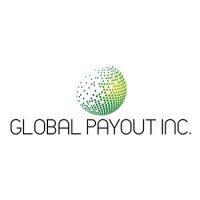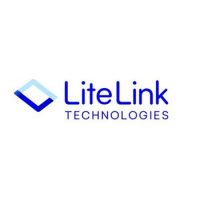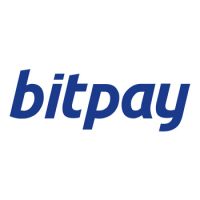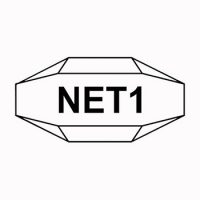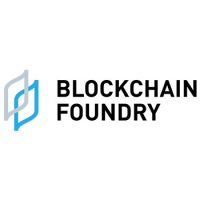Blockchain
2019 Another Blockbuster Year for Fintech: KPMG Pulse of Fintech

Global fintech investment in 2019 fell just shy of 2018’s record with $135.7 billion invested across 2,693 deals, according to the Pulse of Fintech H2’2019, a bi-annual report on global and regional fintech investment trends published by KPMG.
The main theme for 2019’s global fintech market was diversity – with fintechs and fintech investment expanding across product, sector and geographic borders. The expanding definition of fintech and its increasing reach and interconnectivity helped keep fintech investment robust despite the global economic and trade challenges that hindered growth in 2019, including concerns related to Brexit and ongoing trade tensions between China and the US.
In fact, despite these concerns, cross-border transactions remained high with $54.2 billion in cross-border M&A deal value across 138 deals. This focus on cross-border transactions will likely continue as maturing fintechs look to grow and achieve scale and the big tech giants look to extend their reach and gain market share in less developed markets.
Many niche areas of fintech continued to grow and evolve throughout 2019; in particular, proptech investment grew from $1.9 billion in 2018 to a record $2.6 billion in 2019, while fintech-focused cybersecurity investment more than doubled from $316.9 million to $646.2 million. Blockchain and cryptocurrency investment continued to fluctuate, falling from $6.3 billion to $4.7 billion year-over-year, although Facebook’s announcement of Libra and the People’s Bank of China’s announcement of accelerated research and experimentation on digital currency and electronic payments have helped breathe new life into the space.
“Over the past year, the lines have really started to blur between financial services and non-financial services – with fintech companies helping to bridge the gap,” said Anton Ruddenklau, Global Co-leader of Fintech, KPMG International. “It’s a trend that will only continue into 2020. Just look at how the big tech giants are working with both traditional financial institutions and fintechs in order to seamlessly integrate financial services within their ecosystems, and at how the larger fintechs and financial institutions are looking at ways to broaden their offerings into adjacent areas.”
2019 Key Global Highlights
- Global fintech investment fell short of 2018’s record year, with $137.5 billion invested in 2019 compared to $141 billion in 2018.
- Global fintech M&A rose from $91 billion in 2019 to a record-high of $97.3 billion in 2019, despite a strong drop in the number of M&A deals from 622 to 426.
- Global corporate VC investment participation rose during every quarter of 2019, leading to $16.7 billion in total annual VC invested with CVC involvement; CVC-related deal volume was also robust, with 553 deals over 2019, including 166 in Q3’19 – the second-highest quarter ever in terms of CVC fintech deals volume after Q2’18.
- Cross-border M&A held strong at $54.2 billion in deal value – despite ongoing global trade tension.
- The number of fintech deals by global tech giants – including Alibaba Group, Alphabet, Apple, Baidu, IBM, Microsoft and Tencent – increased for the fifth straight year, with $3.5 billion invested across 46 deals in 2019.
- Cybersecurity related fintech investment more than doubled year-over-year, from $316.9 million to $646.2 million.
- Proptech investment rose to a record high of $2.6 billion in 2019 from $1.9 billion in 2018.
Regional Highlights – 2019
$22 billion First Data deal drives US-based fintech investment to a new high in 2019
The US set a new record for fintech funding in 2019, with $59.8 billion in investment compared to $58 billion in 2018. The top deals in the US in H2’19 included the $22 billion acquisition of First Data by Fiserv, the $3.5 billion acquisition of Assurance IQ by Prudential, and the $850 million acquisition of Axioma by Deutsche Boerse. Corporate investment in the US was very strong in 2019, with corporates investing $6.9 billion in fintech – a significant increase compared to $5.9 billion in 2019.
Fintech investment in the Americas remains strong year-over-year
Fintech investment in the Americas region dropped slightly in 2019 with $64.2 billion in fintech investment compared to $65.5 billion in 2018. While the US accounted for a large majority of the fintech investment seen in the Americas, other countries also attracted large deals, including the $821 million acquisition of Canada’s Solium by Morgan Stanley (rebranded Shareworks by Morgan Stanley) and the acquisition of Argentina-based Prisma Medios de Pago for $725 million. Despite the small decline in annual funding, fintech VC investment in the Americas achieved two consecutive quarterly record highs in Q2’19 ($5.6 billion) and Q3’19 ($5.9 billion). In terms of fintech funding, Brazil saw a very strong increase with $890 million invested compared to $567 million in 2018.
Europe sees banner year of fintech funding on 2019
Europe set a new record for fintech funding – attracting $58.1 billion in investment compared to $43.4 billion in 2018. The single $42.5 billion acquisition of WorldPay by FIS accounted for more than half of this number. Other large deals in H2’19 included the buyout of eFront in France for $1.3 billion and the buyout of SIA (Milan) in Italy for $894 million. In large part due to the WorldPay acquisition, fintech investment in the UK grew substantially – from $25.4 billion in 2018 to $48.5 billion in 2019. Meanwhile, Germany saw a very strong year of fintech investment at $1.6 billion – led by the $470 million raise by N26 in Q3’19. France also saw a banner year for fintech with $1.8 billion of total investment.
Asia sees relatively strong funding compared to historical norms
In 2018, Asia saw a massive high of fintech investment, primarily due to the record-breaking $14 billion raise by Ant Financial. When compared to all years prior to 2018, fintech investment in Asia remained relatively steady in 2019 with $12.9 billion invested. The largest deals in Asia during 2019 included the $1.2 billion acquisition of Property Exchange Australia by Commonwealth Bank of Australia in H1’19, and the $1.7 billion Series G raised by India’s Paytm in H2’19. India saw a record-breaking $3.8 billion of fintech funding in 2019, driven by a record Q4’19 ($2.3 billion) which included Paytm’s $1.7 billion raise. Australia also saw a record of $1.9 billion in fintech funding during 2019, while Singapore saw $576 million in investment.
2020: Bigger, bolder deals and blurring lines
In 2020, the lines are going to continue to blur between financial services and non-financial services – with big techs like Alibaba, Tencent, Google and others continuing to look for ways to integrate financial services within their ecosystem of offerings to their customers. Integration will be a big priority and the unbundling of financial services that has occurred over the past few years will likely start to reverse as fintechs, traditional financial institutions, and big techs look to provide more value and more seamless experiences to their customers.
“2020 is going to be an exciting and pivotal year for fintech, particularly as we start to see the impact of the digital banking licensees in Hong Kong (SAR), Australia and Singapore launching and endeavouring to scale, as well as other markets following suit,” said Ian Pollari, Global Co-Leader of Fintech, KPMG International. “In addition, a number of companies from outside of financial services are working to get into parts of the financial services value chain – either directly or through partnerships – and they’re going to blur the lines of financial services even more. As a result, we expect to see bolder responses from incumbent financial institutions in terms of partnerships, as well as strategic investments and M&A.”
Key Predictions for 2020
- The big tech giants like Alphabet, Alibaba and Tencent will increase their focus on the fintech space, both working to increase their reach into developing markets and to increase the value and seamless of their ecosystems to their customers.
- Maturing fintechs and challenger banks will continue to expand the breadth of their service offerings beyond their initial niche focus areas and make strategic moves across international borders.
- The unbundling of financial products will begin to reverse course as consumers increasingly seek a primary interface to manage all of their financial affairs on a holistic level.
- Cybersecurity-focused fintechs will become more attractive as traditional financial institutions shift from building to buying cyber solutions, particularly in areas like fraud, security, and identity management.
- Consolidation is going increase, with bigger and bolder M&A deals becoming the norm in more mature fintech sub-sectors.
- Building on the momentum of Hong Kong (SAR) and Australia, more countries in the Asia Pacific region will develop digital banking regimes and use digital banking licenses to guide digital bank efforts.
- The focus on open data opportunities will move beyond banking and into other aspects of the financial services industry.
SOURCE KPMG International
Blockchain
PFMcrypto Introduces 1-Day Earning Plans as User Base Reaches 9.2 Million Across 192 Countries

Cloud-based mining platform expands short-term digital asset income options with no fees,daily profits, flexible contracts, and withdrawals anytime.
Blockchain
Transactix Launches New Era in Canadian Payments
Blockchain
New Stablecoin from Transactix Reshaping Canadian Cryptocurrency Landscape
-

 Blockchain Press Releases6 days ago
Blockchain Press Releases6 days agoHTX and Justin Sun Launch $6M Mars Program Special Edition, Offering One User a Historic Space Journey
-

 Blockchain5 days ago
Blockchain5 days agoBitget Blockchain4Youth sostiene l’innovazione del Web3 e dell’IA all’hackathon “Build with AI” di Google Developer Group
-

 Blockchain6 days ago
Blockchain6 days agoBlocks & Headlines: Today in Blockchain – May 9, 2025 | Robinhood, Solana, Tether, China, Women in Web3
-

 Blockchain Press Releases5 days ago
Blockchain Press Releases5 days agoBybit Surpasses 70 Million Users, Reinforces Commitment to Transparency and Institutional Growth
-

 Blockchain7 days ago
Blockchain7 days agoBlocks & Headlines: Today in Blockchain – May 7, 2025 | Coinbase, Riot Games, Curve DAO, Litecoin, AR.IO
-

 Blockchain Press Releases6 days ago
Blockchain Press Releases6 days agoMEXC Lists USD1, Accelerating Global Stablecoin Innovation with World Liberty Financial
-

 Blockchain2 days ago
Blockchain2 days agoBlocks & Headlines: Today in Blockchain – May 12, 2025 | Rootstock, Zimbabwe Carbon Registry, Fastex, 21Shares, The Blockchain Group
-

 Latest News5 days ago
Latest News5 days agoCasino Kings Knocks Out Partnership with Boxing Powerhouse BoxNation



















